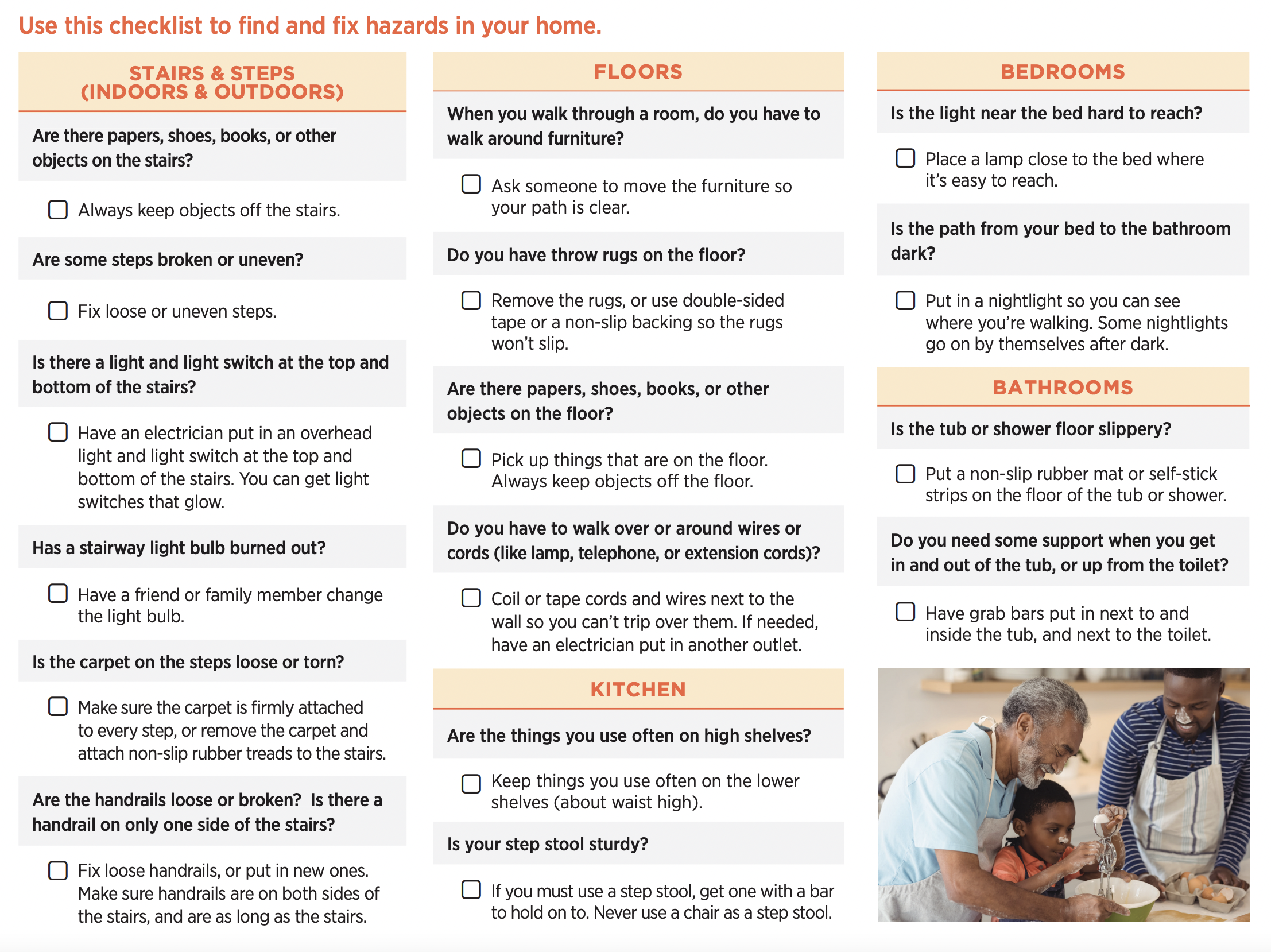The smart Trick of Dementia Fall Risk That Nobody is Discussing
Getting The Dementia Fall Risk To Work
Table of ContentsExamine This Report about Dementia Fall RiskAbout Dementia Fall RiskThe Ultimate Guide To Dementia Fall RiskThe 10-Minute Rule for Dementia Fall Risk
An autumn risk assessment checks to see exactly how most likely it is that you will certainly fall. It is mostly done for older grownups. The evaluation normally consists of: This includes a collection of concerns about your total health and if you've had previous falls or troubles with equilibrium, standing, and/or strolling. These devices check your stamina, balance, and stride (the way you walk).Interventions are referrals that may minimize your threat of dropping. STEADI includes 3 actions: you for your threat of dropping for your risk aspects that can be boosted to attempt to avoid falls (for instance, equilibrium troubles, impaired vision) to reduce your risk of falling by utilizing effective approaches (for instance, supplying education and learning and sources), you may be asked several concerns including: Have you fallen in the past year? Are you stressed about dropping?
Then you'll sit down again. Your provider will examine how much time it takes you to do this. If it takes you 12 seconds or even more, it might suggest you go to greater danger for an autumn. This examination checks stamina and balance. You'll rest in a chair with your arms went across over your upper body.
The positions will certainly obtain tougher as you go. Stand with your feet side-by-side. Relocate one foot halfway onward, so the instep is touching the large toe of your various other foot. Relocate one foot fully in front of the various other, so the toes are touching the heel of your various other foot.
5 Easy Facts About Dementia Fall Risk Explained
Many falls occur as a result of multiple adding factors; for that reason, handling the risk of falling starts with identifying the factors that add to drop risk - Dementia Fall Risk. A few of one of the most appropriate threat factors consist of: Background of prior fallsChronic medical conditionsAcute illnessImpaired stride and equilibrium, lower extremity weaknessCognitive impairmentChanges in visionCertain high-risk drugs and polypharmacyEnvironmental factors can also boost the threat for drops, consisting of: Inadequate lightingUneven or damaged flooringWet or slippery floorsMissing or damaged hand rails and grab barsDamaged or incorrectly fitted devices, such as beds, mobility devices, or walkersImproper use assistive devicesInadequate supervision of individuals staying in the NF, consisting of those that display hostile behaviorsA successful autumn danger monitoring program calls for their website an extensive professional analysis, with input from all participants of the interdisciplinary group

The care plan should also include interventions that are system-based, such as those that advertise a safe environment (ideal lighting, handrails, get bars, etc). The effectiveness of the interventions must be assessed periodically, and the care plan revised as required to reflect changes in the fall risk analysis. Implementing an autumn danger management system using evidence-based ideal technique can lower the occurrence of falls in the NF, while limiting the possibility for fall-related injuries.
The smart Trick of Dementia Fall Risk That Nobody is Discussing
The AGS/BGS standard suggests evaluating all adults matured 65 years and older for autumn threat every year. This screening is composed of asking patients whether they have actually dropped 2 or more times in the previous year or click resources looked for medical focus for a fall, or, if they have not dropped, whether they feel unsteady when strolling.
Individuals who have actually dropped once without injury must have their balance and stride assessed; those with stride or equilibrium abnormalities must receive extra analysis. A history of 1 autumn without injury and without stride or equilibrium problems does not call for more assessment beyond ongoing yearly loss risk screening. Dementia Fall Risk. An autumn threat assessment is needed as component of the Welcome to Medicare assessment

See This Report on Dementia Fall Risk
Documenting a falls background is one of the top quality signs for autumn prevention and management. copyright drugs in certain are independent predictors of falls.
Postural hypotension can frequently be relieved by reducing the dosage of blood pressurelowering medicines and/or quiting medications that have orthostatic hypotension as an adverse effects. Use above-the-knee support hose and copulating the head of the bed raised might additionally minimize postural reductions in high blood pressure. The advisable elements of a fall-focused checkup are received Box 1.

A TUG time higher than or equivalent to 12 secs recommends high fall danger. Being not able to stand up Source from a chair of knee elevation without using one's arms suggests boosted loss threat.